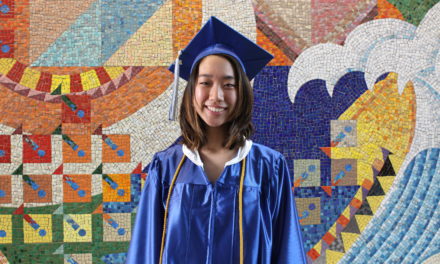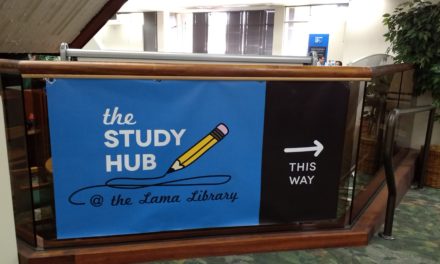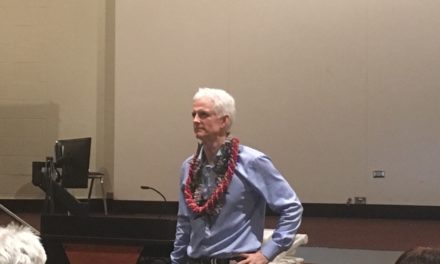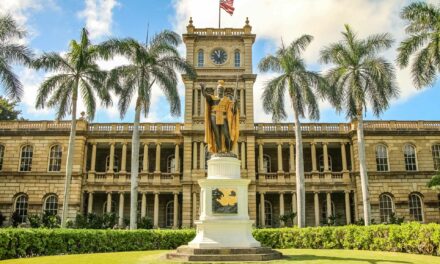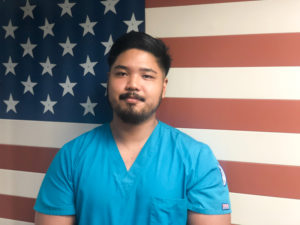By Kapiʻo News Staff
Here is a look at the happenings of KCC’s 31st annual International Festival from Tuesday to Thursday.
Tuesday
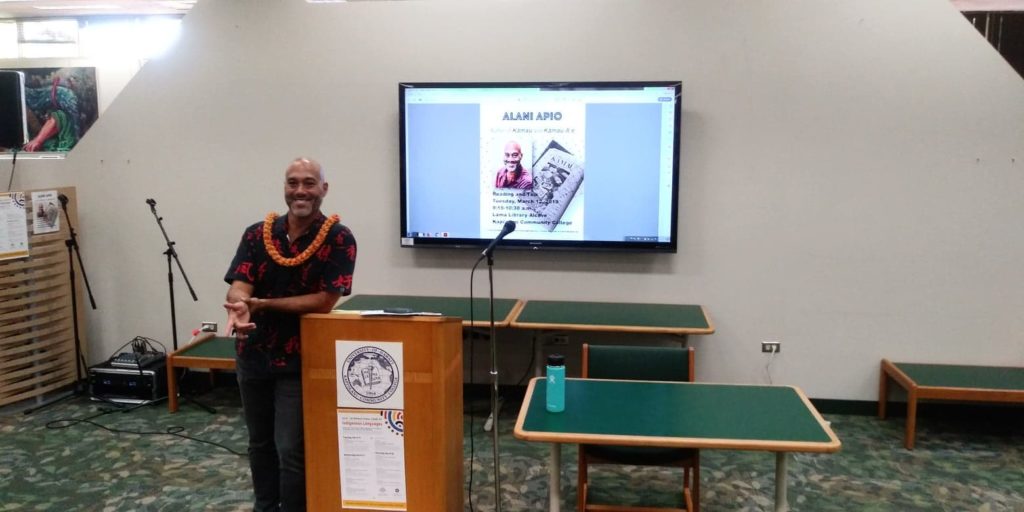
Alani Apio, author of Kāmau and Kāmau Aʻe, spoke to those who attended his literary reading in the Lama Library Alcove where he discussed the development of his two playwrights. Both based on the chronicles of his life and his family’s, Apio said that he expresses in his pieces what it means to be a Hawaiian living in Hawaiʻi and how losing those close to him due to suicide, specifically his cousins, has built his self-identity over the years. Believing that he needs to wake up every morning with a sense of purpose, Apio said that one way he finds fulfillment in his life is by helping others, especially the homeless. (Photo by Lexus Yamashiro)
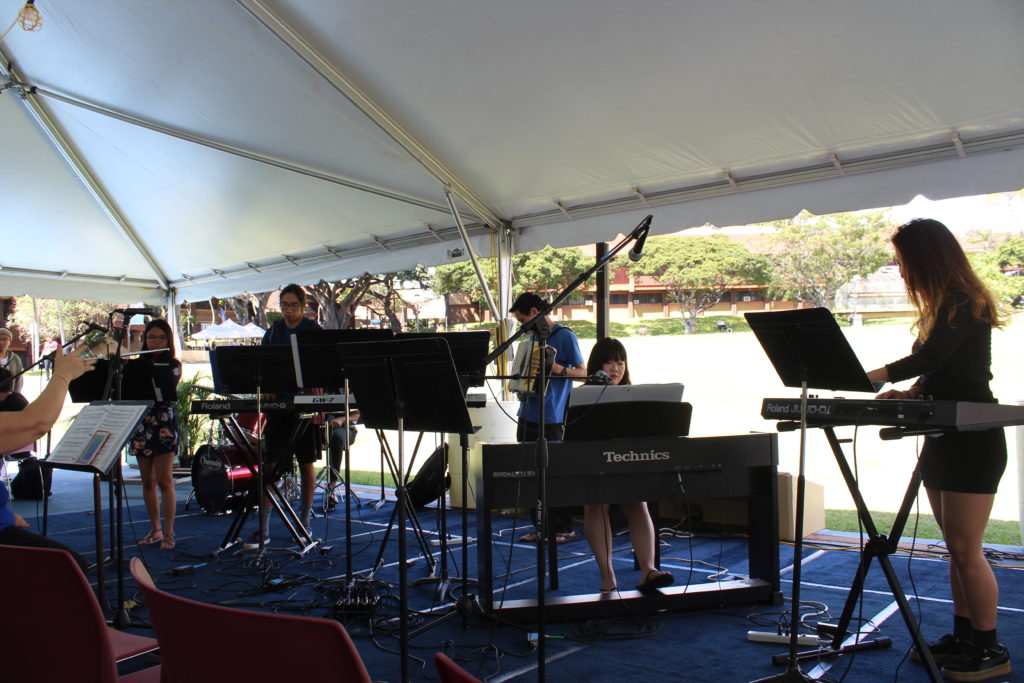
Under the ʻŌhiʻa tent outside the cafeteria, students of Anne Craig Lum’s MUS 206 Synthesizer Ensemble performed music from places such as Japan and Korea. Lum’s students performed with a flute, accordion, drums, and synthesizers, starting off the mini concert with the theme song from “Howl’s Moving Castle,” a popular Studio Ghibli film. (Photo by Lexus Yamashiro)
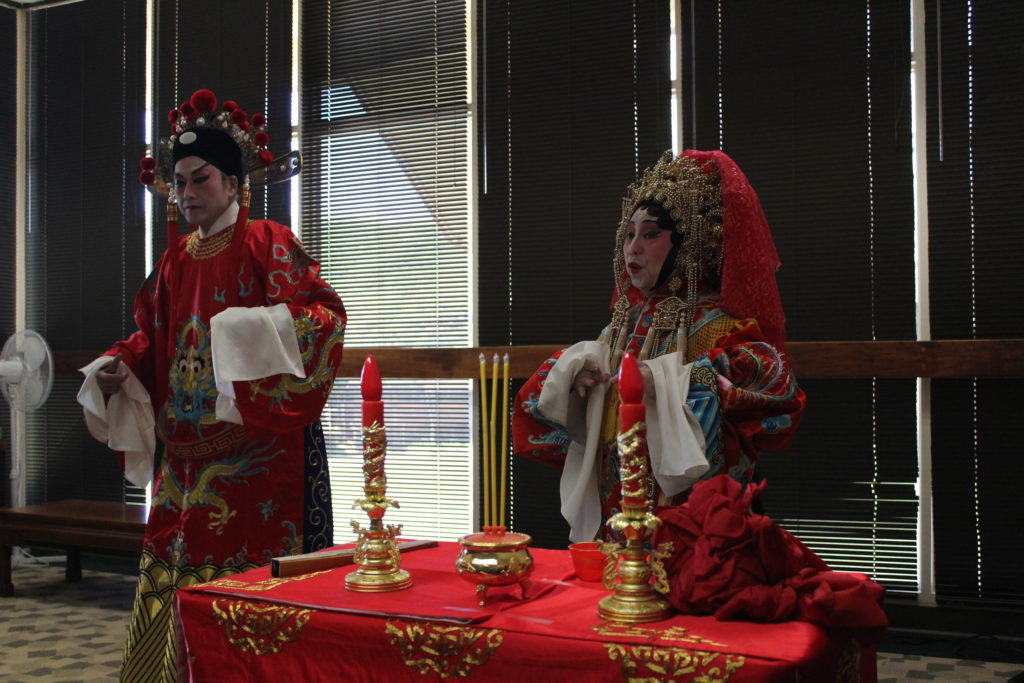
From China, husband and wife Albert (left) and Lisa Au performed a scene from “Cantonese Opera: Fragrant Sacrifice,” a fictional play that tells the tragic love story of Princess Cheung-Ping and her lover, Chow Sai-Hin. During their performance, Albert and Lisa acted out the part of when the lovers commit suicide by drinking poison to save their kingdom. (Photo by Lexus Yamashiro)
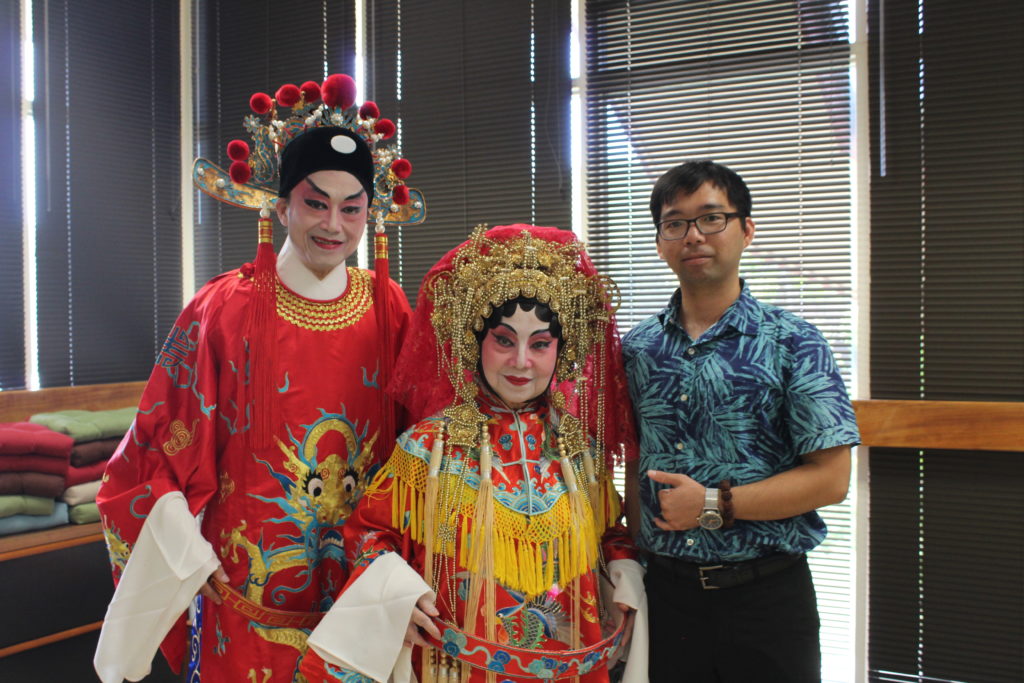
Second-year KCC student Yubo Zhou (right) invited Albert and Lisa Au to perform “Cantonese Opera: Fragrant Sacrifice” for International Festival after doing a research paper for his anthropology class. The Natural Sciences major’s decision to write about Cantonese opera was based on his lack of knowledge of it and wanting to learn more about this area that he has been somewhat familiar with, being that he is originally from China. Bringing Albert and Lisa Au to perform is what Zhou hopes will be memorable for those of the younger generation who are unfamiliar with Cantonese opera. (Photo by Lexus Yamashiro)
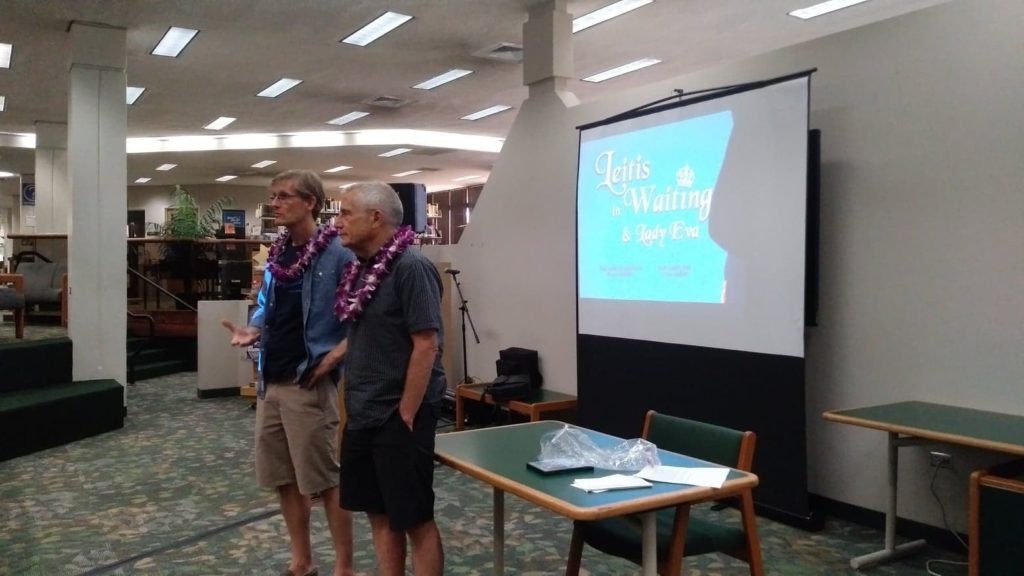
“Leitis in Waiting,” directed by Dean Hamer (right) and Joe Wilson, screened in the Lama Library Alcove, a documentary that follows Joey Mataele, a transgender Tongan woman who serves the royal family and is founder of the Tonga Leitis Association. Hamer said that the decision to create this 72-minute long film sparked after wrapping up another documentary called “Kumu Hina” that tells of the life of Hinaleimoana Wong-Kalu, a Hawaiian transgender woman. He recalled being told by Wong-Kalu that in order to truly understand Pacific culture, he and Wilson would need to visit Tonga. After seeing how authentically the leitis of Tonga live their lives, Hamer said he believed that it was an interesting story that needed to be told. (Photo by Lexus Yamashiro)
Wednesday
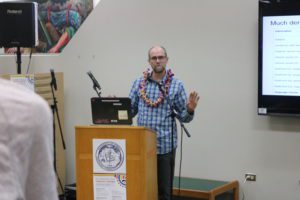
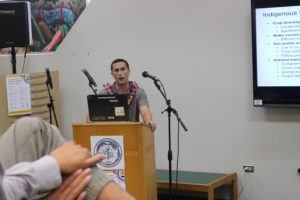

Professors Gary Holton, a Linguistics professor from UH Mānoa and Mike Ross, an Ethanobotany professor from KCC, did a presentation about ethnobotany and indigenous cultures. The two professors spoke of how native peoples use plants throughout the world for medicinal properties.
In Samoa, the people use the plant “samasana” as a traditional hepatitis curer. The bark from the tree is peeled and boiled, which produces a healing agent. The professors also talked about how the Samoan plant “taulasea” has the potential to be used as an anti-HIV drug if scientists can better understand the chemical properties of the plant and the HIV disease as a whole. The professors lastly spoke of Project Olonā, which is a collaboration between chemists, botanists, and engineers to protect and expand the usage of Native Hawaiian plants.
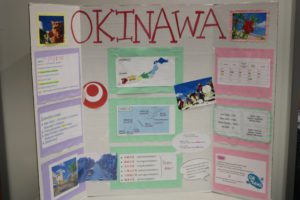
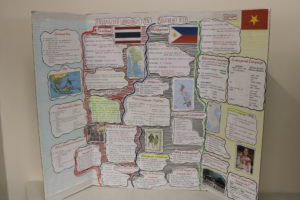
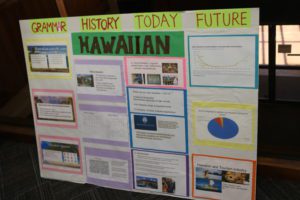
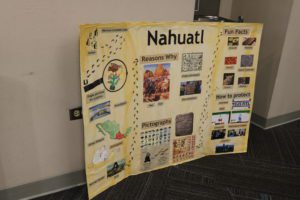
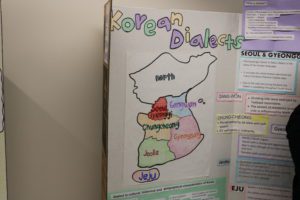
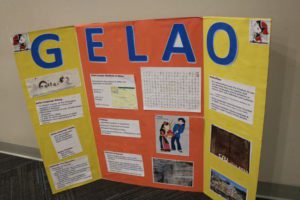
Students from Professor Malm’s ESOL 94 class showcased poster boards of various nations throughout the world. Included nations are Japan, China, Korea, Mexico, Vietnam, Philippines, Thailand, and Hawaiʻi. The students’ goals were to teach others about the indigenous languages that exist in these areas, and to inform others about why these languages are going extinct. The biggest reason for why these languages are dying out is because the younger generations have lost interest in learning about them.
The students also talked about how each country has multiple dialects of their language. A location in one part of Japan can have words and phrases that sound different than other areas in the nation. Each area is proud of their unique dialects.
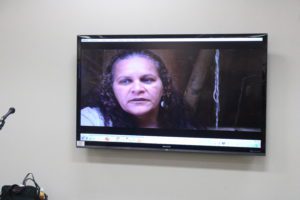
A movie was shown about a woman by the name of Jessie “Little Doe” Baird who is a Wampanoag Native American from the state of Massachusetts. Baird’s ancestors where nearly wiped out in the 1600’s due to Yellow Fever from when Europeans landed in North America and established colonies along the Native’s land.
The language of Baird’s ancestors was almost completely extinct. She, along with fellow Wampanoag friends and family, decided to bring back the language of Wampanoag Native American’s by conducting study sessions to learn this forgotten language in America. Her quest to bring back the language of her wronged ancestors lead her to a MA at Massachusetts Institute of Technology (MIT). Baird’s daughter, who is also a Wampanoag descendant, is the first native speaker of the language in over 100 years. Although the amount of Wampanoag speakers is very small, Baird has brought back the almost extinct language of her indigenous American ancestors from hundreds of years ago.
Thursday
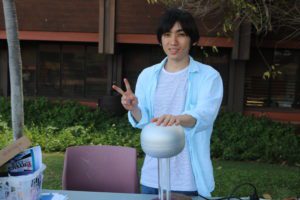
KCC’s Physics Club presented a display in honor of pi day. Arvin Hontake, an Electrical Engineering major, showed off the club’s catapult and Van de Graaff generator. The Physics Club works with other members of the STEM (Science, Technology, Engineering, Math) concentration. The professor in charge of the club, Milincic Radovan, makes the club enjoyable by getting guest speakers, physics researchers, and other members of the science community to get students to dive into the exciting world of science.
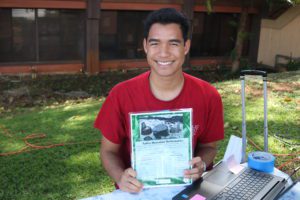
In celebration of Pi Day, members of KCC’s STEM program hosted fun games for students to enjoy. One game was a quiz hosted by Keanu Rochette, who is a peer mentor and executive assistant at the STEM center. Rochette, a bioengineering major, hosted a game which had students try and figure out different historical scenarios for science and math being used throughout Hawaii’s past. Some interesting tidbits are that King Kalākaua had electricity implemented into ʻIolani Palace four years before the U.S. White House obtained it for the president, ancient Polynesians traveled across the Pacific Ocean by navigating the celestial bodies and ocean current Charles Darwin was a huge fan of the Hawaiian story of Kumolipo since it explains how Hawaiians view the origins of astronomy, biology, physics, and chemistry, and questions were asked about how Native Hawaiians conducted math, which was sometimes in groups of four.
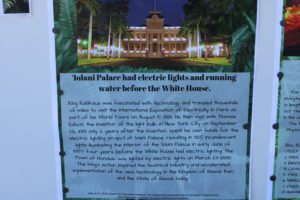
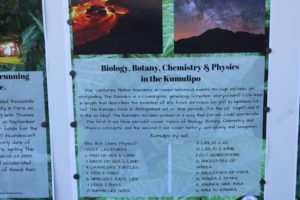
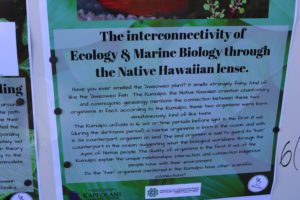
At KCC’s Pi Day posters were hung around information boards. These posters were designed to educate students and staff about the history of science and innovation throughout Hawaii’s past. Navigation, electricity, canoe counting, indigenous Hawaiian plants used for medicine, and astronomy charting were all topics covered by these posters. In many cases, the Hawaiian monarchy and aliʻi (chiefs) supported these ideas for their people.

In front of Lama Library, students set up displays for Ethnomusicology: A World of Music. Here, students were welcome to try out different instruments and learn their history and/or make. The ‘Uli ‘Uli (under the poster board) are gourds filled with small seeds or pebbles, and feathers at the other end of the handle. They are traditionally used during hula dancing.

